Pinnacles National Park is one of the nation’s newest national parks, having been changed from a national monument under Obama in 2013. Compared to other big parks like Yosemite, it’s small (1100 sq. miles vs. just 42 sq. miles!) and attracts many fewer visitors (222,152 visitors last year compared to a few million at some of the big parks).
Because it’s a fairly new national park, it seems to be off many people’s radar. Luckily for us, that means the park still feels off the beaten path, and you can even have some trails all to yourself.
We visited Pinnacles over Spring Break (when most other national parks are crowded!) and spent two nights in our trailer at the campground. Here’s a guide to visiting Pinnacles National Park based on our two-night stay this past April.
Where is Pinnacles National Park?
Pinnacles National Park is located in the middle of nowhere in central California, about fifty miles inland from the Pacific Ocean, east of Monterey. The nearest town is Hollister, about 30 miles north. To get there, you’ll take a small road through scenes like this of rolling hills punctuated by wildflowers and rocky outcrops:
The park has two entrances, one on the west side and one on the east. You’ll probably use the east entrance as that’s the one where the campground is and most of the hiking trails begin. Note that there is no way to drive through the park, and it takes about two hours to drive around the park if you head to the wrong entrance.
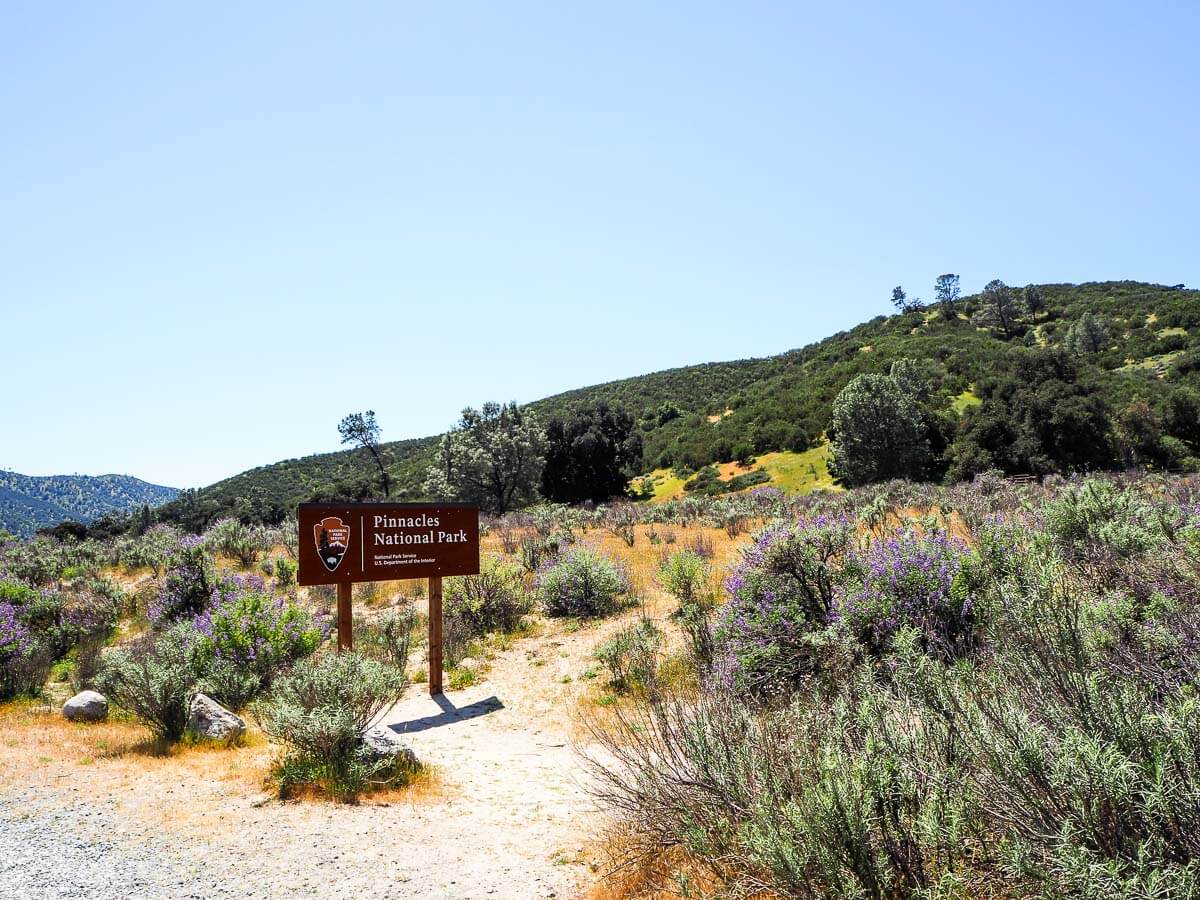
Is Pinnacles National Park worth visiting?
Pinnacles is what remains of an ancient volcano field from about 23 million years ago. Actually, the volcanic field was almost 200 miles southeast of the park, but as the Pacific plate moved northward, it broke the volcanic field and carried about two-thirds of it to where Pinnacles is today. Over millions of years, the rock formations were exposed by erosion from wind, rain and ice, and the park’s unique landscape of monoliths and canyons came to be.
The park has two talus caves that were created when earthquakes caused huge boulders to become lodged between rock walls. Not only are the caves fun to walk through, but they’re important homes for several species of bats.
The Bear Gulch Cave is the year-round home of a maternal colony of a species called Townsend’s big-eared bats; here they hibernate in the winter and breed and raise their young in the spring and summer (see below for how this affects the hike). The other cave, Balconies Cave, is where male bats like to rest because it’s safe from human disturbance.
Pinnacles is also home to more than 400 species of bees, more than any other place in North America, and the California red-legged frog, which is making a comeback in Pinnacles after having been an endangered species.
Perhaps the most famous resident of Pinnacles is the the largest bird in North America, the California condor. Condors were extinct in the wild in the 1980s but because of an aggressive breeding program, the species was saved and released back into the park where they now can be seen soaring over the highest points.
And in spring the park is full of beautiful wildflowers!
What is there to do in Pinnacles National Park?
Pinnacles has 30 miles of excellent hiking trails and lots of flora and fauna to appreciate. The main attraction here is the talus caves, Pinnacles rock formations, and California condors, and there are several ways you can experience them. We took three kid-friendly hikes, and I think if you have two nights here, these three hikes would give you an excellent overview of the variety of landscapes in the park. Here’s a sample itinerary:
- Day 1: Arrive in the early afternoon, visit the Visitor Center to get advice from the ranger, do the Old Pinnacles Trail to Balconies Cave Trail in the late afternoon
- Day 2: After breakfast, head to the Bear Gulch Day Use Area and do the Moses Spring-Rim Trail Loop. Rest in the afternoon when it’s hot.
- Do the Condor Gulch Trail in the late afternoon/early evening or the next morning before leaving.
- If you want to do a longer hike on Day 2, do this 6-mile loop: Moses Spring-Rim Trail Loop and continue on the High Peaks and Condor Gulch Trails.
Click here or on the map below for a Google Map to help you plan your stay.
Pinnacles National Park hikes
Old Pinnacles Trail to Balconies Cave Trail
This 5-mile hike includes three sections: the out-and-back Old Pinnacles Trail and the Balconies Cave and Balconies Cliffs loop. The Old Pinnacles Trail starts at the Old Pinnacles Trailhead (where there’s parking) and follows the West Fork Chalone Creek until it starts to slowly climb up to the Balconies Cave.
The elevation gain is just 350 feet, and the trail is easy and mostly level, making it possible for us to complete a good of distance in a short time. But because we did this hike in the evening after setting up camp the first night, we weren’t able to get up to the cave and instead turned around after completing most of the Old Pinnacles Trail.
If we’d had enough time to complete the Balconies Cave and Cliffs trail loop, we would have experienced one of the highlights of the park — the rock formations of Machete Ridge and Balconies Cliffs and of course the cave itself. The Balconies Cave and Cliffs loop is a 1.2 mile trail through the Balconies Cave and around the back on the Balconies Cliffs Trail. Like most kids, mine think caves are awesome, so missing that portion of the trail is a good excuse to plan a trip back!
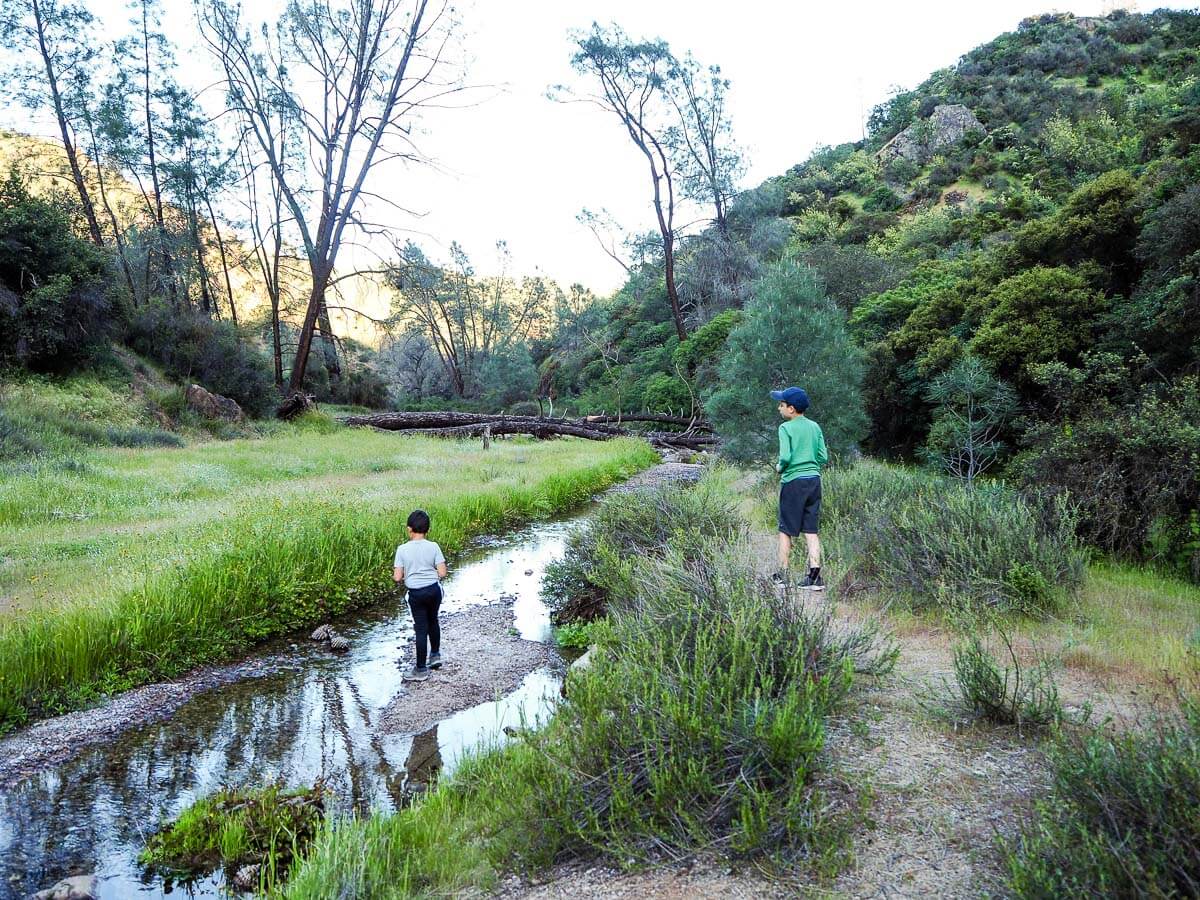
Condor Gulch Trail
This 2-mile hike took us past the Bear Gulch and up to the Overlook for a view of the surrounding landscape. What makes this trail special is the view of High Peaks, which you can see after hiking for just a few minutes.
High Peaks from the Overlook on Condor Gulch TrailThe trail is one mile to Overlook and another .7 miles to where it intersects with the High Peaks Trail. The first part is moderate but the second part is strenuous. Because we did this hike in the evening of our second day, we opted to do just the first section.
Read more: Hike with kids in a volcano in Lassen National Park
If you come in the spring, save time for this walk — the wildflowers on this trail are spectacular!
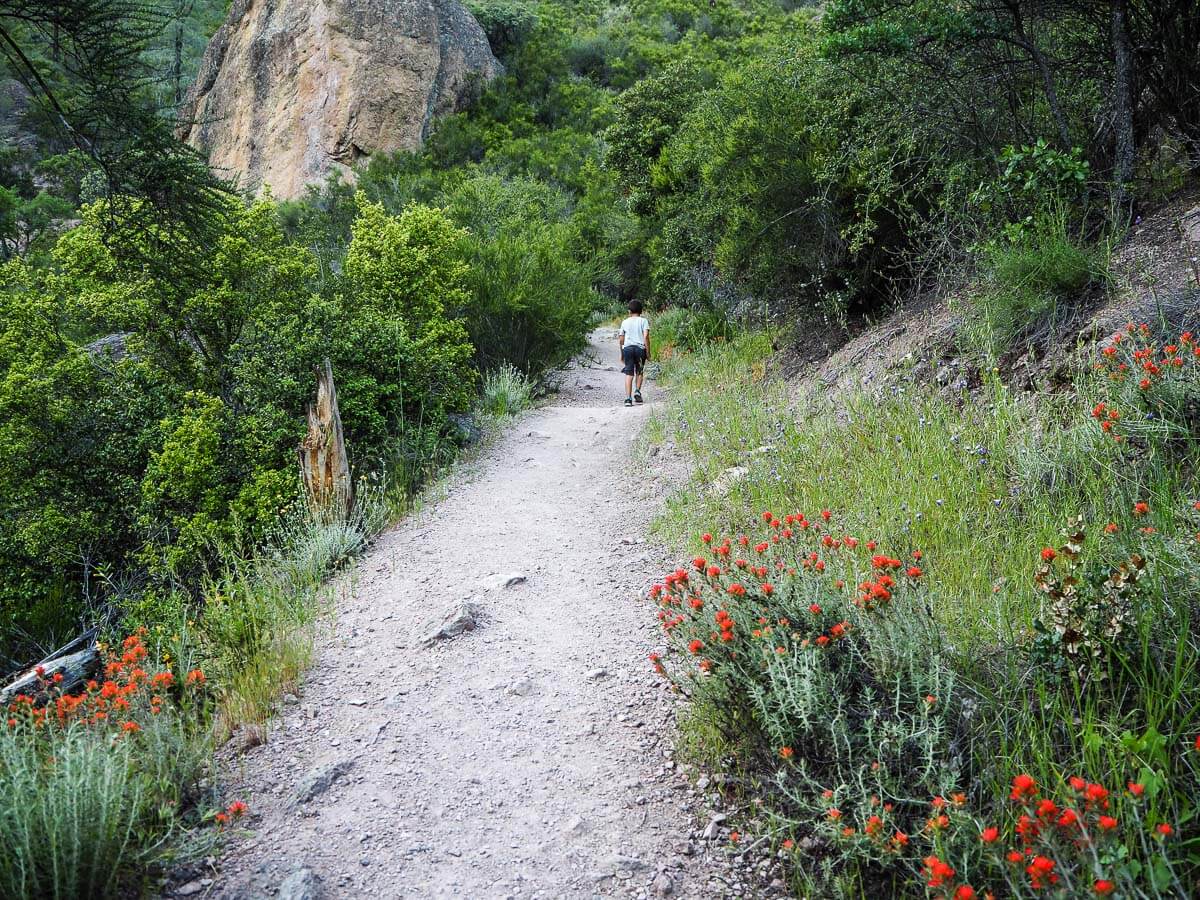
Moses Spring-Rim Trail Loop
This 2.2. mile loop was the highlight of our visit and is probably the most popular trail in the park. The Bear Gulch Cave is the main attraction, but note that it’s closed from mid-May to mid-July to protect the baby bats that are born here each year.
During most of the year, the lower half of the cave is open, while the other half is closed to protect the bat colony. The entire cave is open for about one week in late March and one week in late October. You can see the cave schedule here.
The trail begins just past the parking lot at Bear Gulch Day Use Area; at first, the trail has a gradual incline on a shaded trail. You’ll come to a tunnel (below) that we thought was the cave trail, but it’s just a tunnel that you’ll quickly pass through before continuing on the trail.
Soon the Moses Spring Trail arrives at the Bear Gulch Cave Trail and the entrance to the cave. Note that everyone should have a flashlight to safely pass through the dark parts of this cave.
As mentioned above, this is a talus cave formed when huge boulders fell and formed ceilings over the narrow gorges. This is the cave that’s home to the maternal colony of Townsend’s big-eared bats, so at least one section of the cave is closed to protect the bats’ habitat. You’ll notice this because you’ll come to a place where one path is fenced off to your right.
The cave is not hard to go through, but it does require some scrambling over rocks and going up a lot of stairs in the dark, so be prepared to watch where you’re going. It’s doable with kids but you may need to help them out through the darkest or narrowest parts.
As you exit the cave, you’ll come to a long set of stairs carved into the rock. They take you up to some of the nicest views in the park — from here you can access Monolith and walk around part of Bear Gulch Reservoir.
After taking a rest at the reservoir, you’ll continue on the Rim Trail, which is higher up with beautiful views of the landscape below. Be a bit careful on this trail since there isn’t a railing, and note that it’s in full sun.
You’ll soon come to a point where you can choose to keep going to the High Peaks Trail or continue east to hook back up with the trail back to the parking lot. If you choose the former, it’s another 4 strenuous miles with one steep section that requires climbing up stairs that are carved into the rock.
We didn’t do this section but I’ve read that there are handrails to hold on to, and the ranger recommended it for active families. Eventually the trail connects with the Condor Gulch Trail, which we visited separately that evening.
Pinnacles National Park Camping
The campground is very basic. The campsites are pretty close together and many don’t have shade. The bathrooms are basic, and there are showers and a swimming pool open in the summer. The bathrooms are basic, and there are showers and a swimming pool open in the summer. The camp store sells snacks but not much food or meals, so bring plenty of supplies for camping.
Plan for hot weather if you come from May-September. When we were there in April, it was in the upper 80s, and our site had no shade, so we were hot in the afternoons!
I’d recommend sites 6, 14, 20, 21, 27, 31 and 32.
If you have a large RV, you’ll camp at the RV ring. Sites there are pretty close together and have no shade, but there are hookups. The rest of the campground has individual sites for tent and trailer camping (no hookups). Our trailer is just 16 feet and easily fit in our site, but there were larger ones at nearby sites and lots of people tent camping.
If you’re with kids, they’ll enjoy looking for birds (especially quail), deer and lizards at the campground.
Tips for visiting Pinnacles National Park
- The night sky here is amazing!
- There is no lodging, gasoline or food in the park, so plan accordingly. You can get gas in Hollister if you use the park’s east entrance.
- This park gets very hot in the summer, and spring is the most popular time to visit.
- Don’t forget that the Bear Gulch Cave can be closed from mid-May to mid-July; check here for updates.
- Flashlights are necessary for walking through the caves, and you may have to cross places where there’s water (this wasn’t a problem when we were there).
- Bring plenty of water while hiking, at least 1 liter of water per hour of hiking. When you’re up in the rocks, it’s at least 10 degrees hotter, and parts of the trails have no shade.
- While hiking in the late afternoons and evenings, watch for rattlesnakes on the trails. They come out at that time of day to soak in the warmth of the sun. We encountered one just a few feet from us on the Condor Gulch Trail!
- Like other national parks, Pinnacles doesn’t allow dogs on any trails.
- Rock climbing is allowed but the rocks here are made of weak volcanic breccia and tuff, so climbing is recommended only for those trained and well equipped.
- Stop at the Visitor Center and ask for recommendations for hikes and activities based on your level of fitness and ages of people in your group. The ranger we met was so helpful!
- There’s no cell service in the park.
- It costs $30 per vehicle to enter the park. You pay at the Visitor Center, where you can also buy a national parks pass for $80 for one year (free for military & 4th graders, $20 for seniors).
Learn more at the Pinnacles National Park site or Visit California’s Pinnacles page.
What questions or tips do you have about Pinnacles National Park?

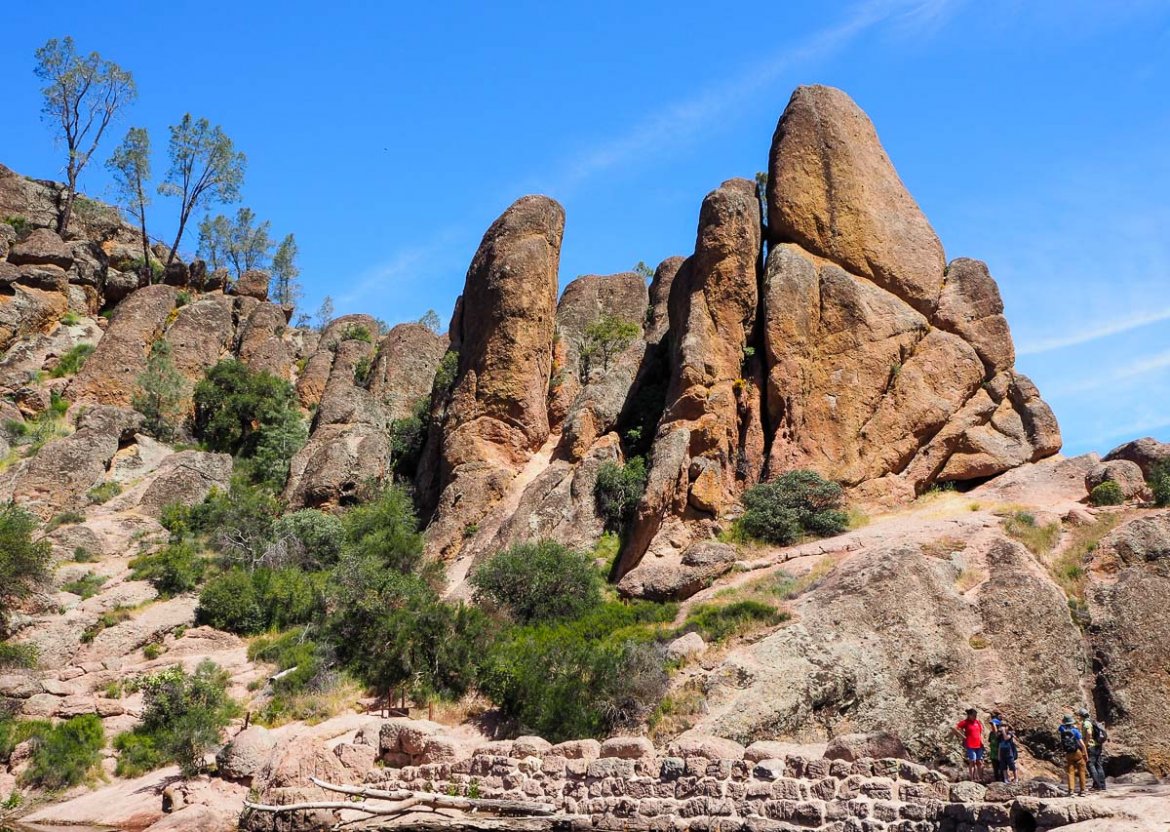
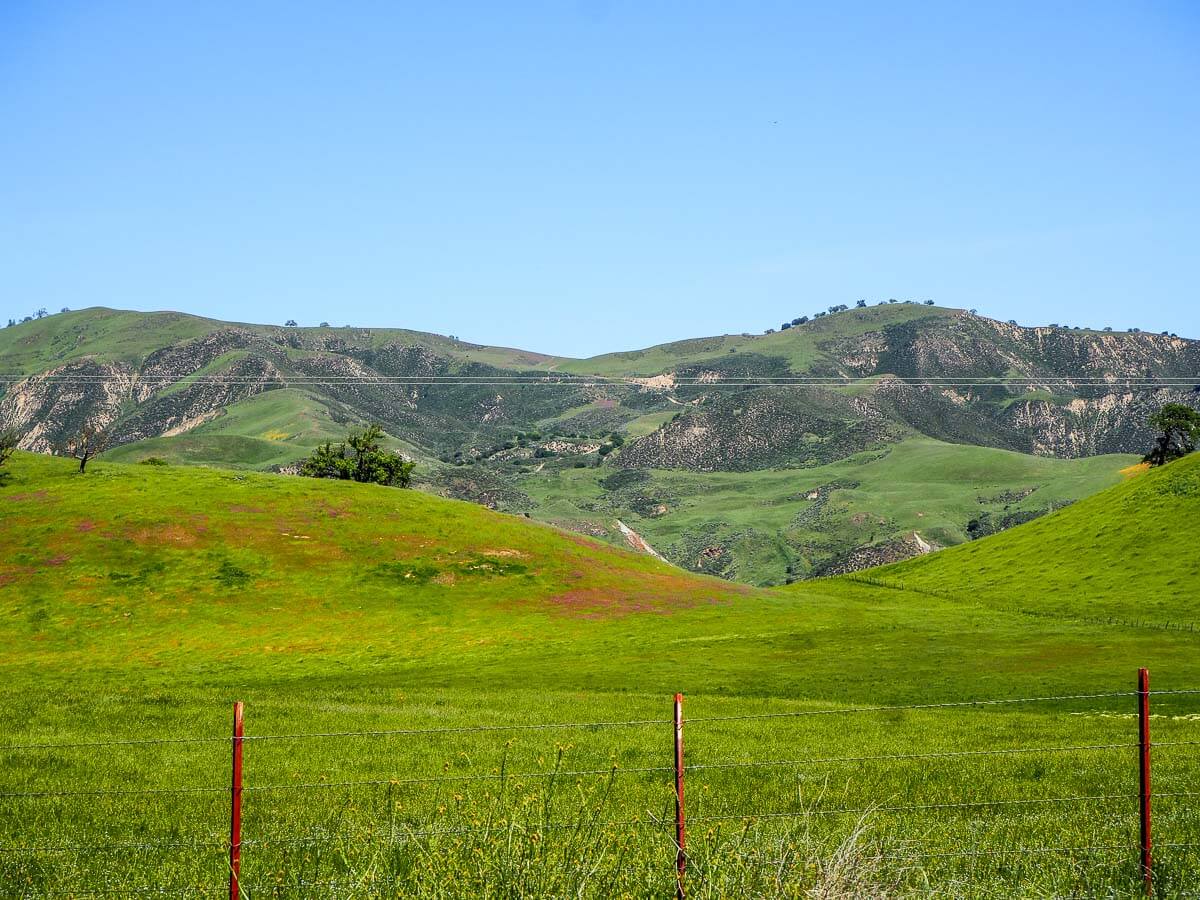
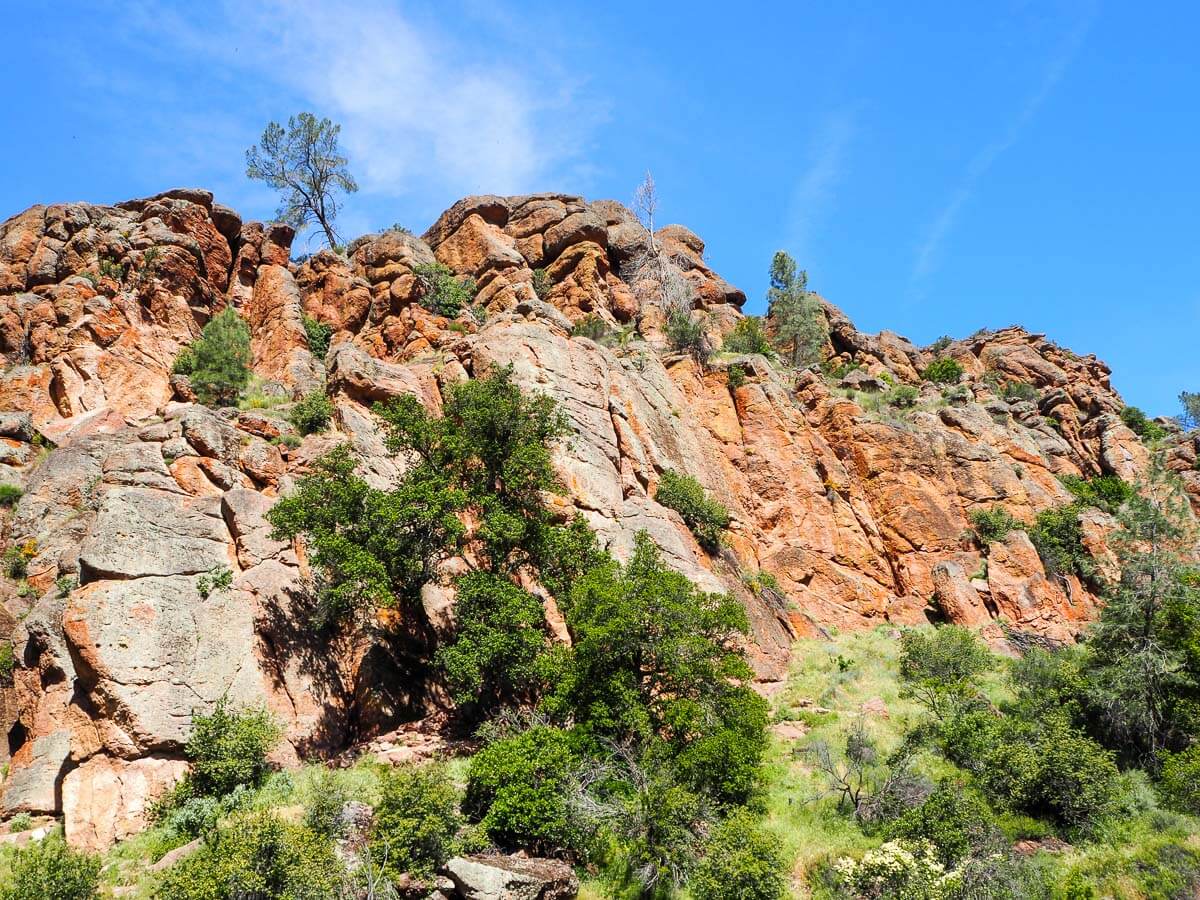
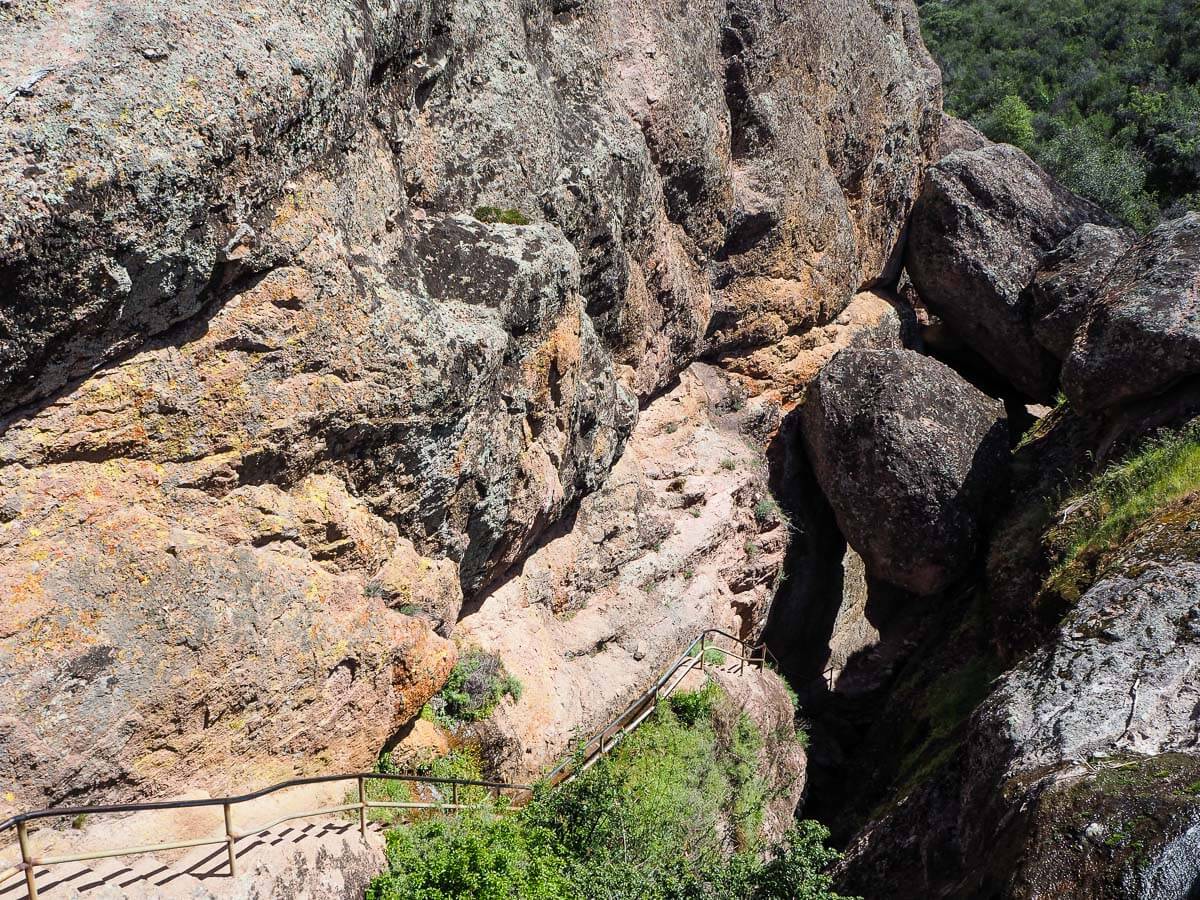
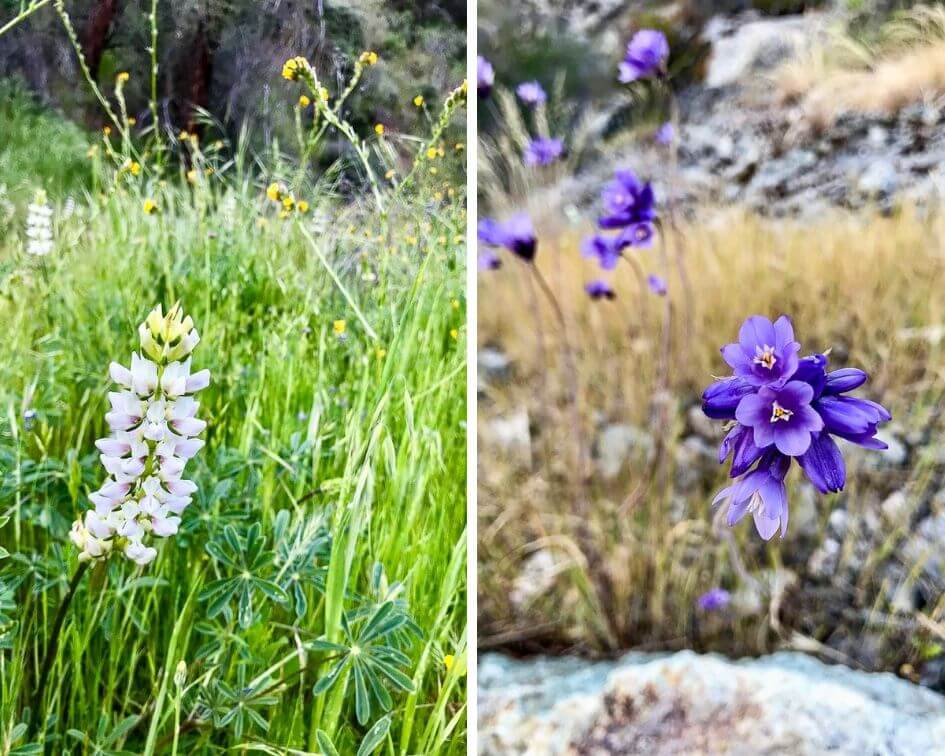
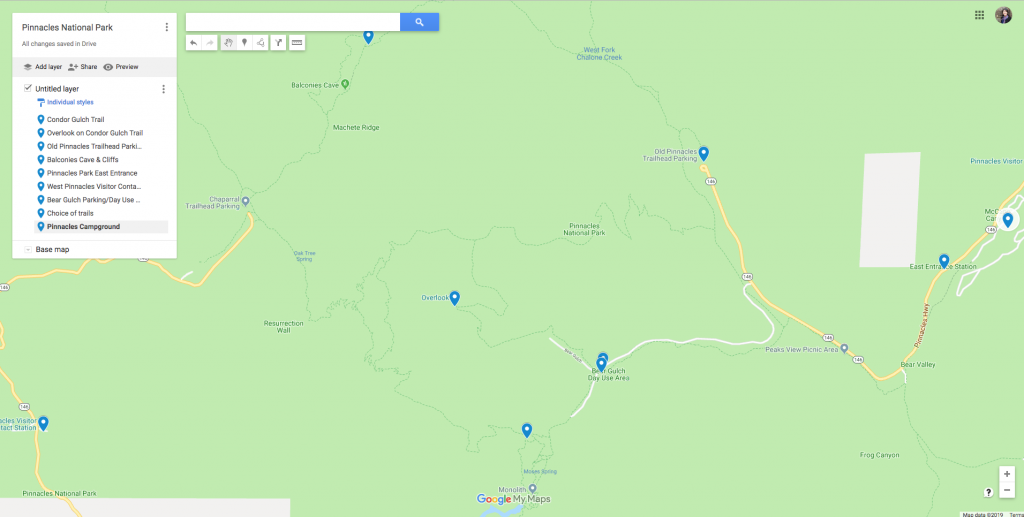
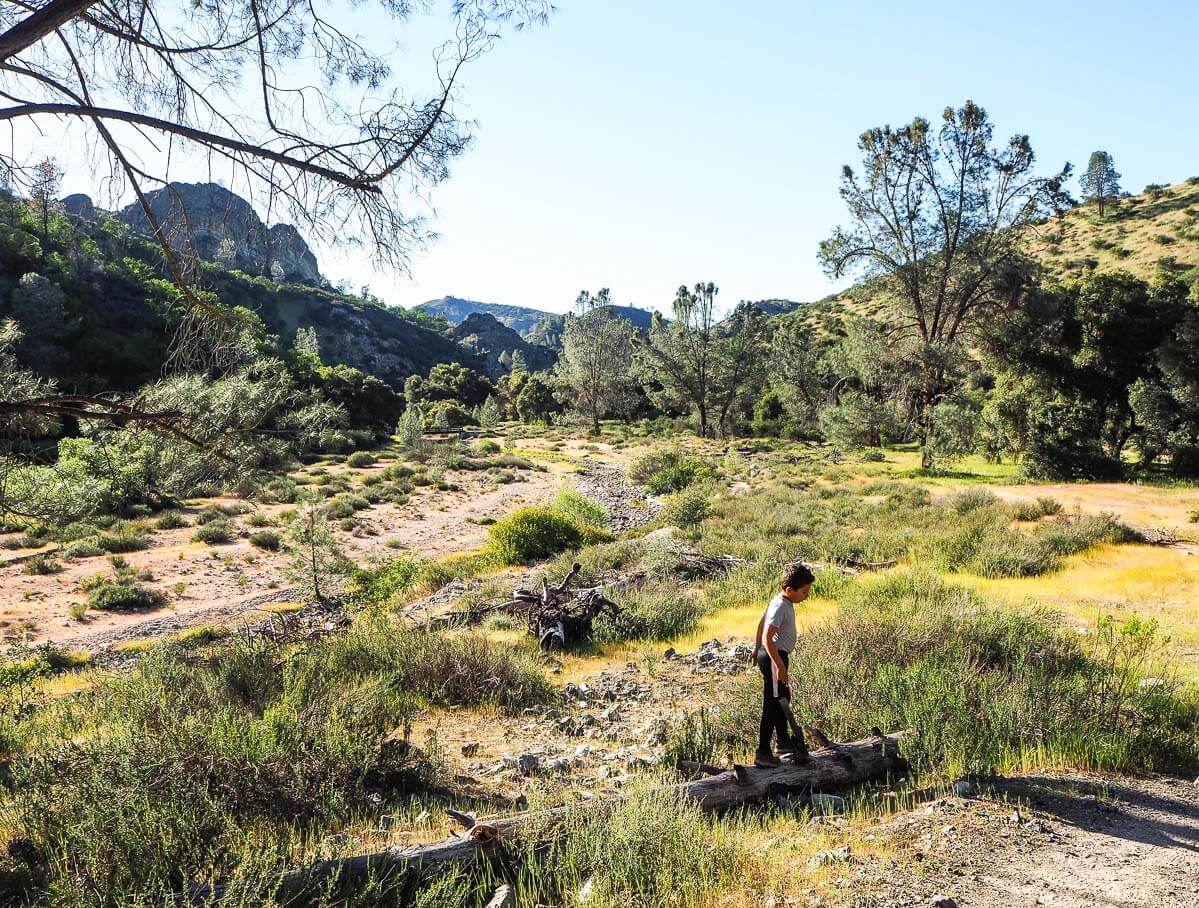
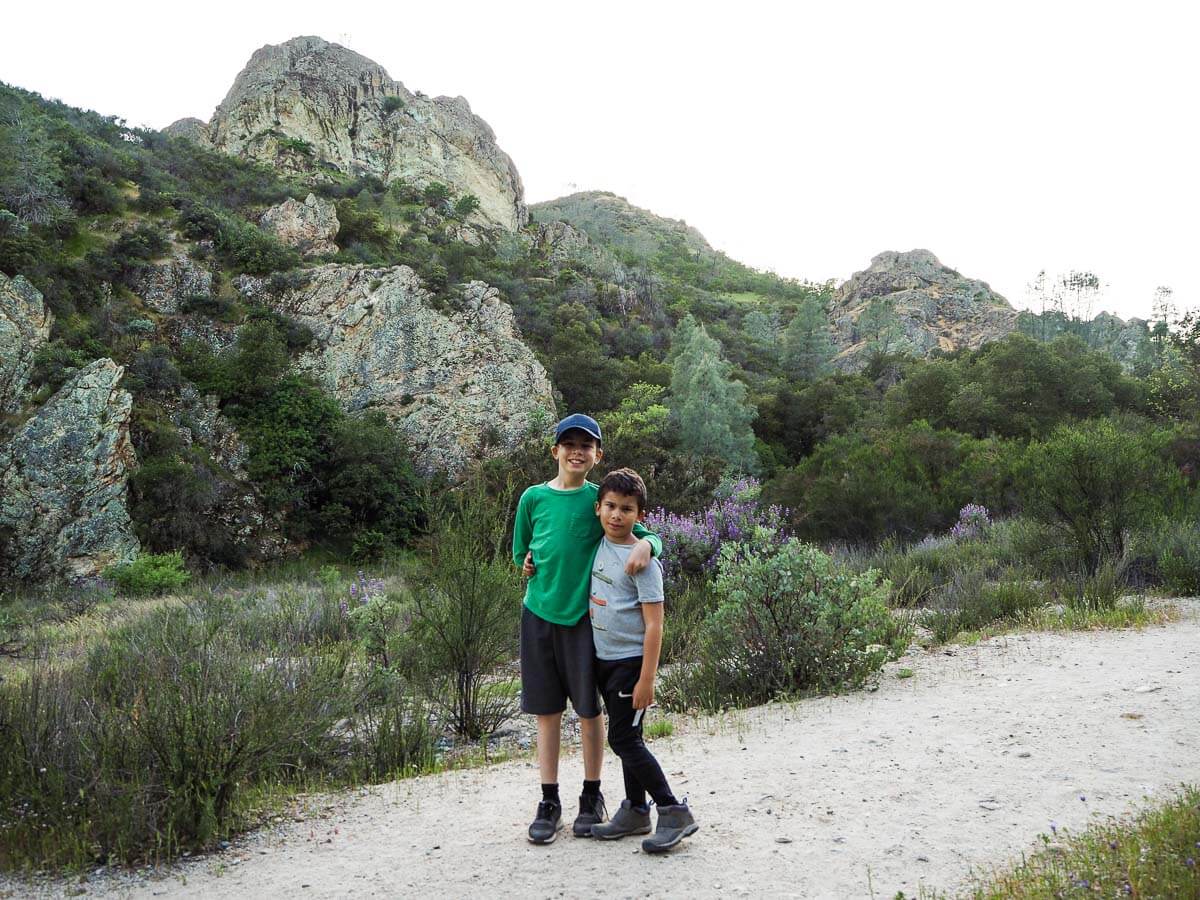
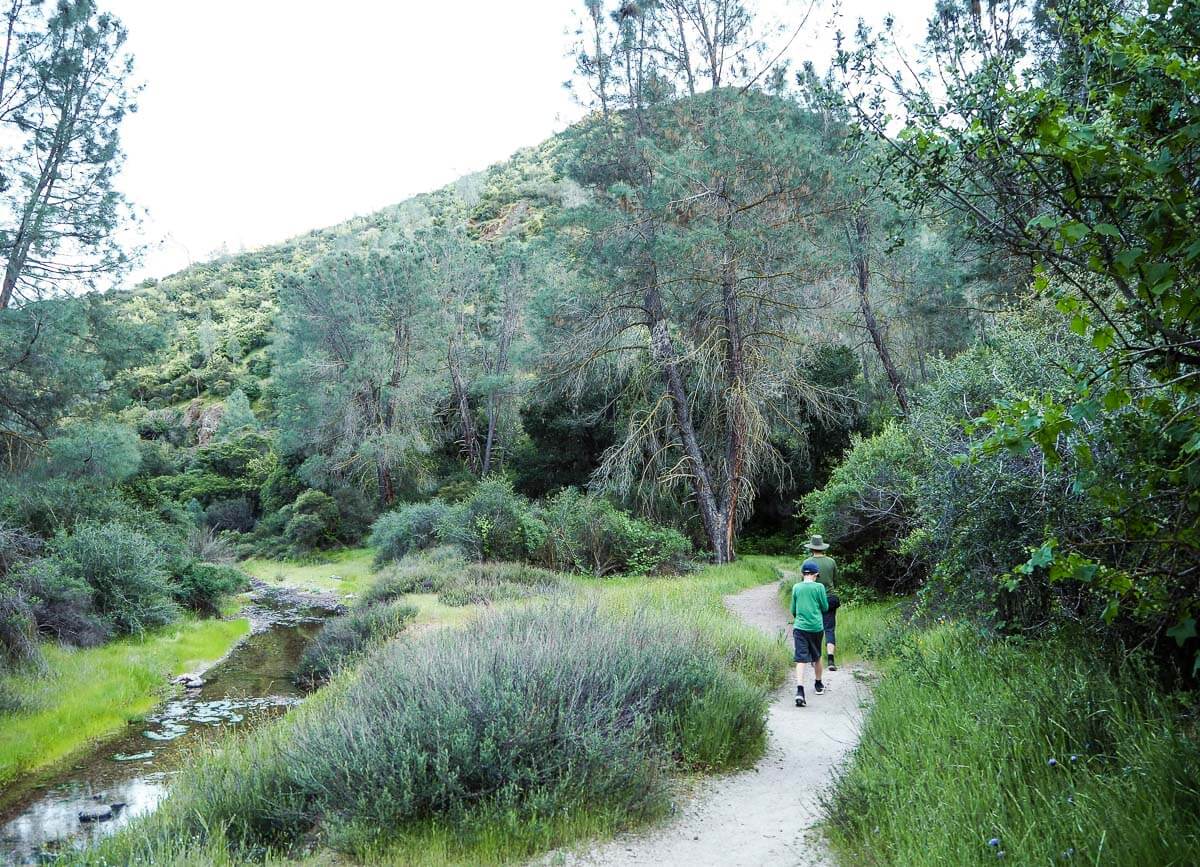
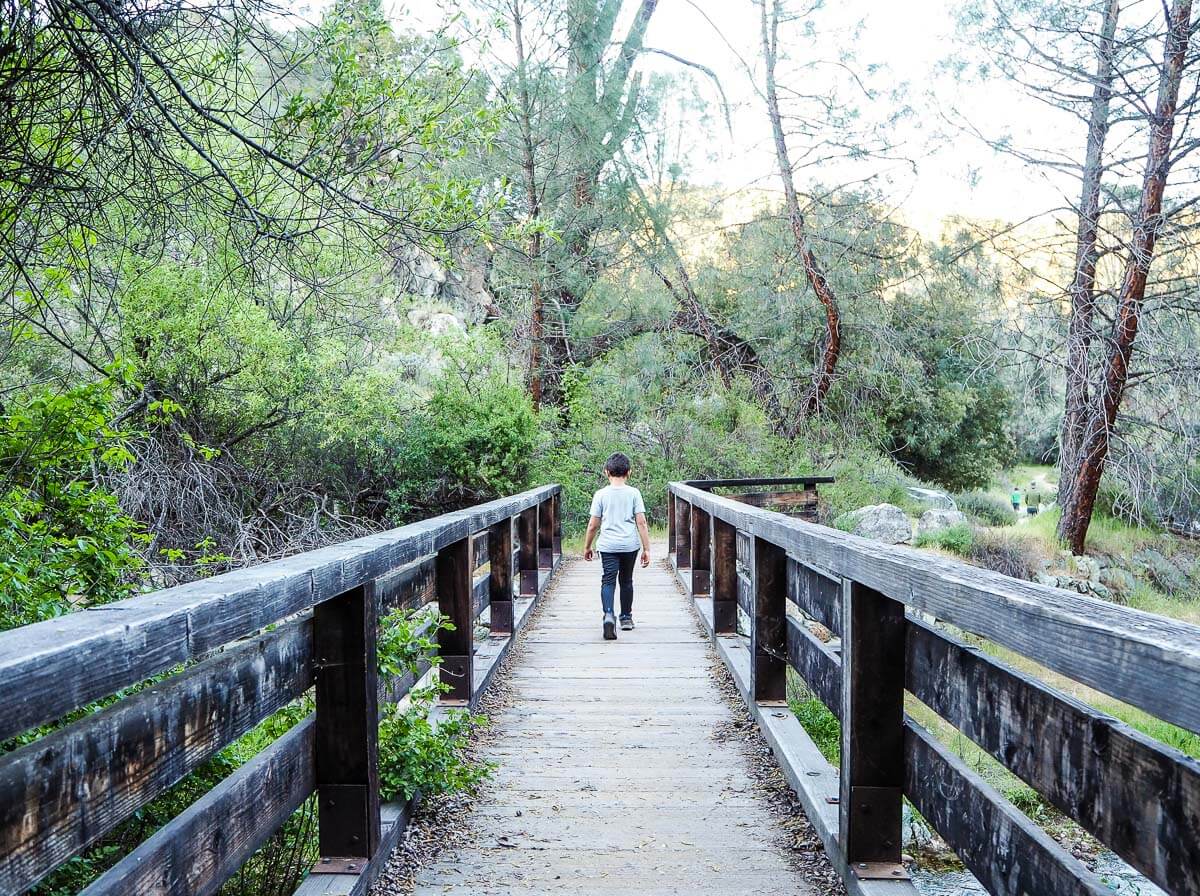
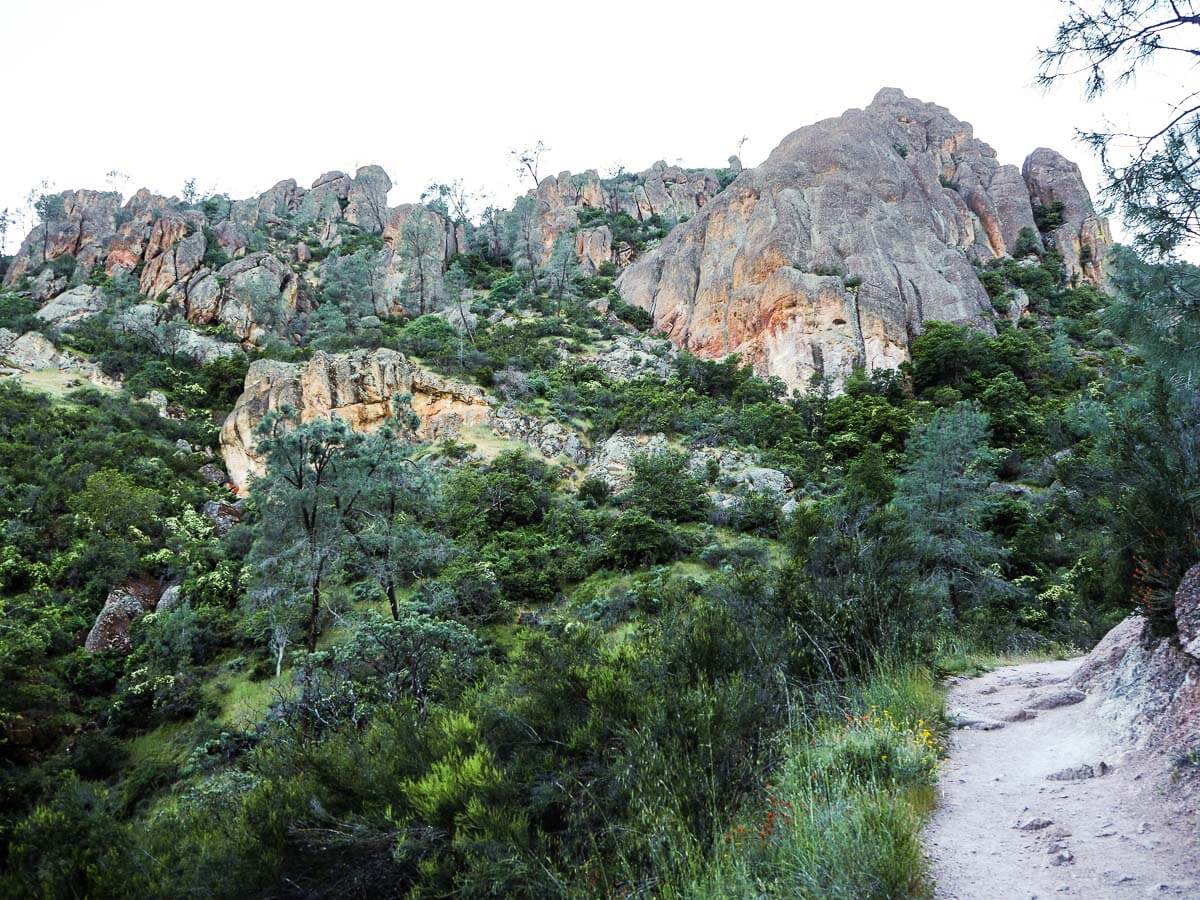
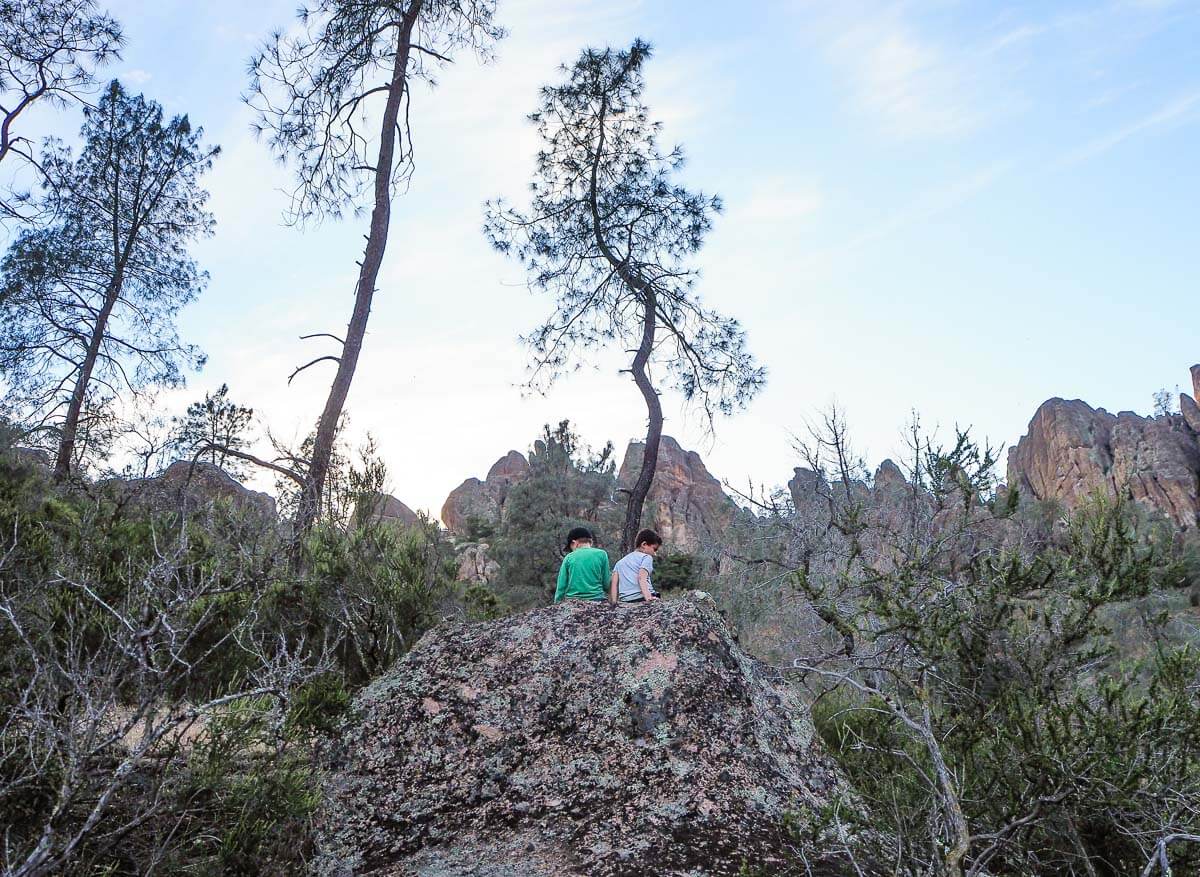
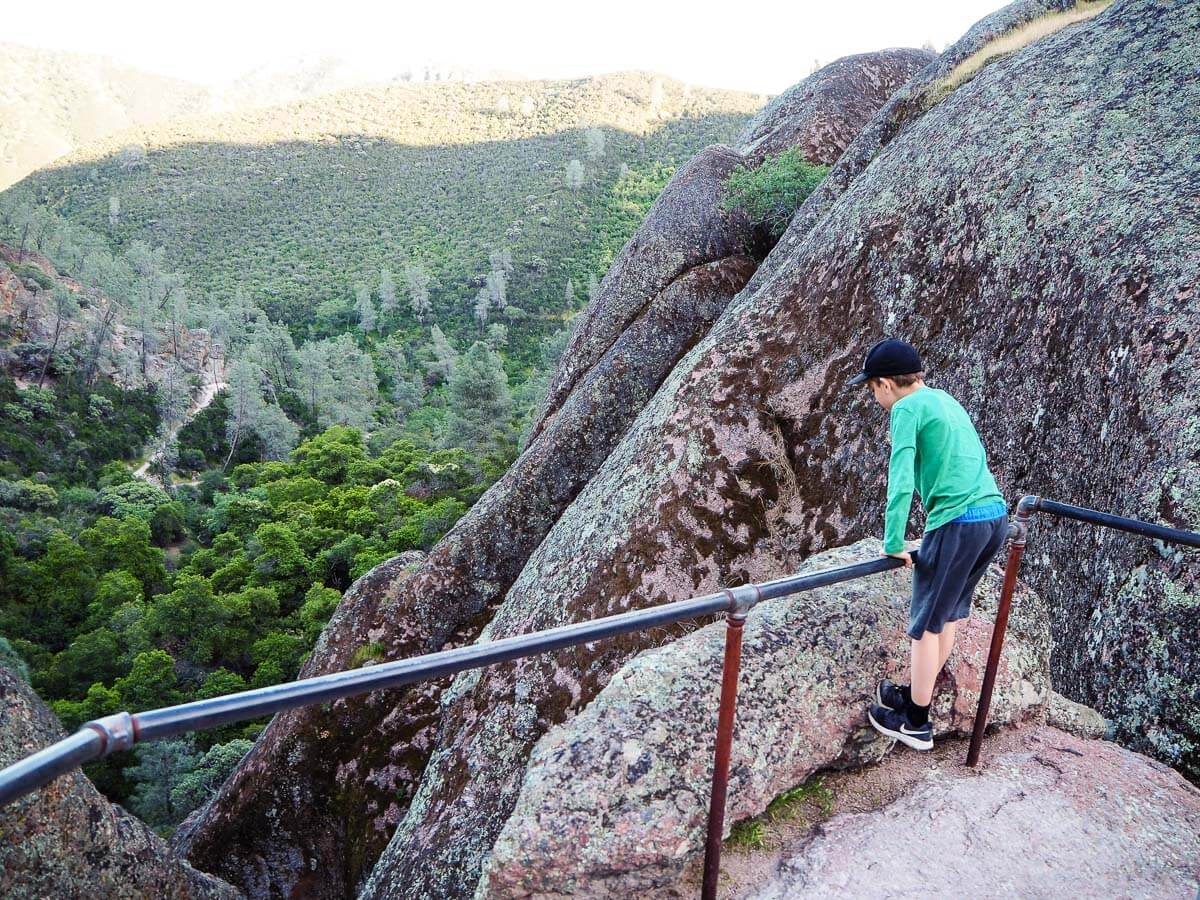
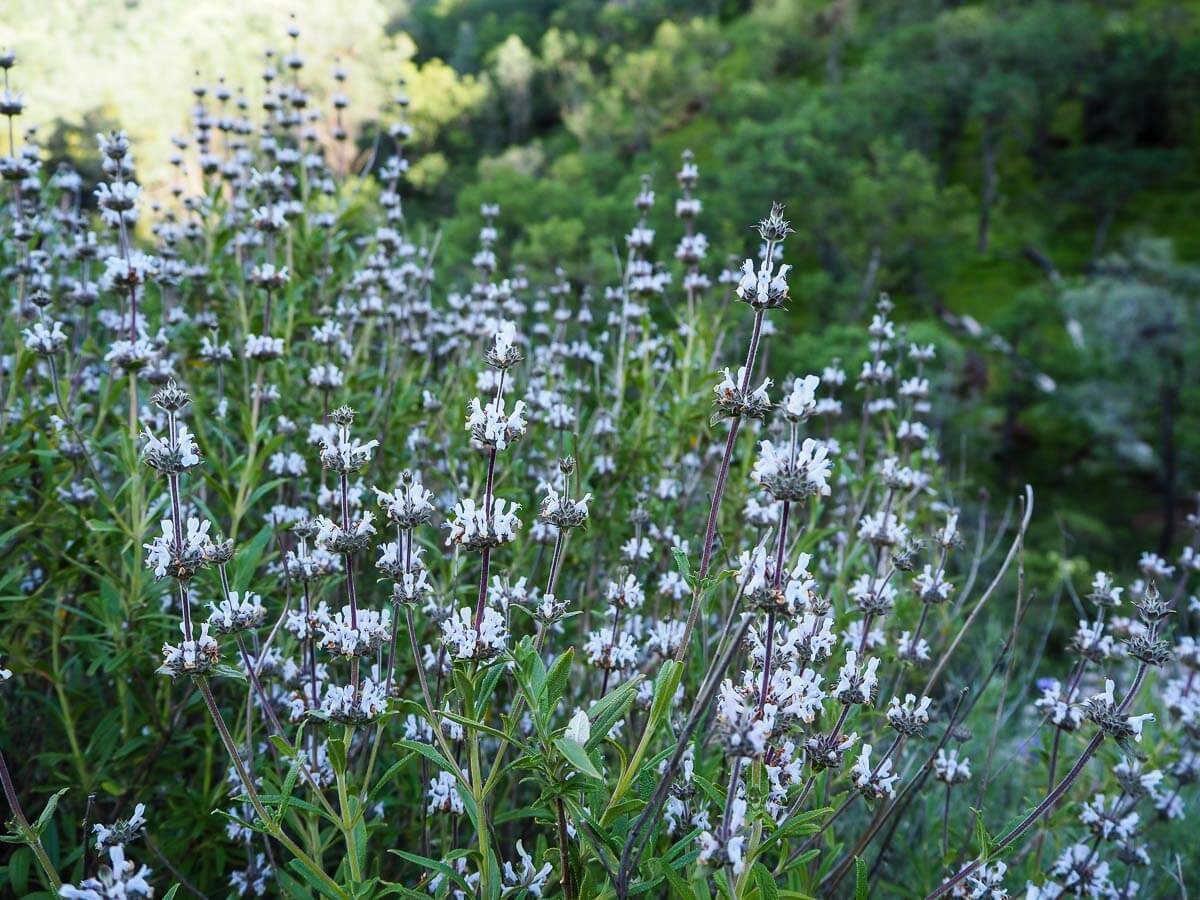
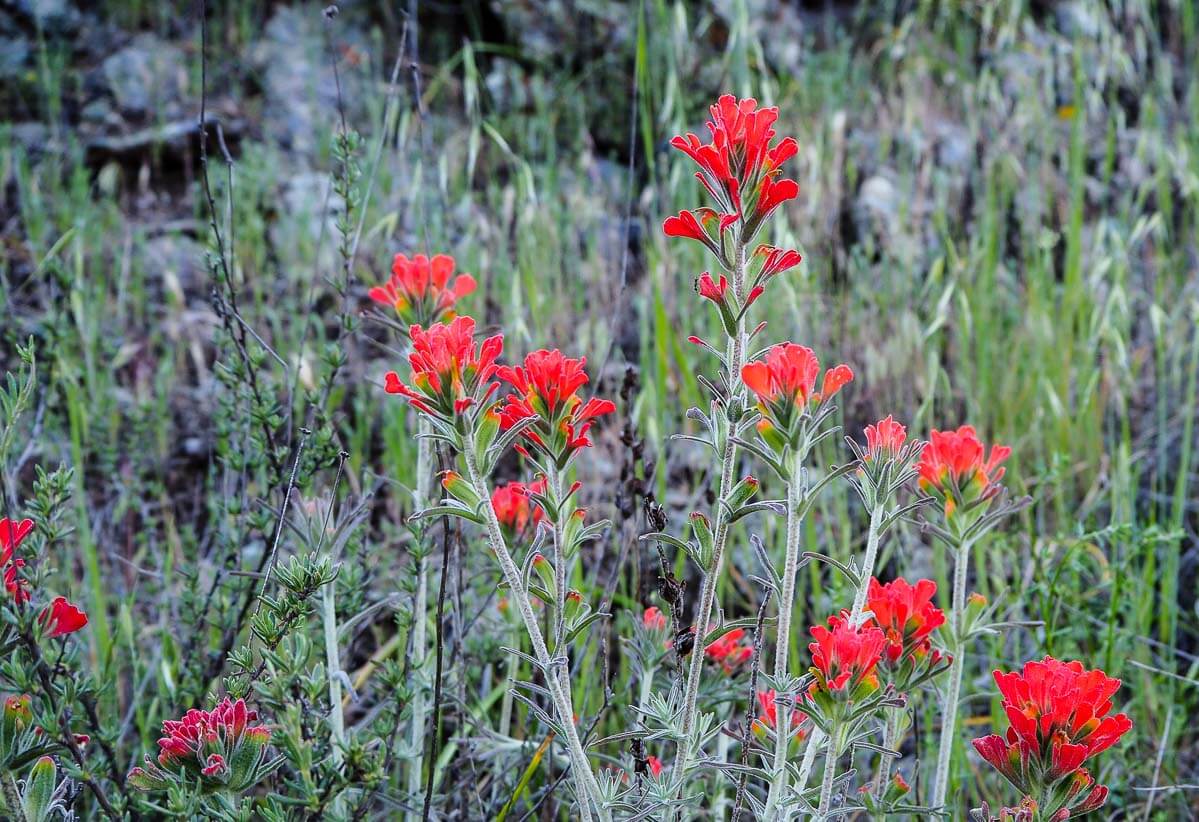
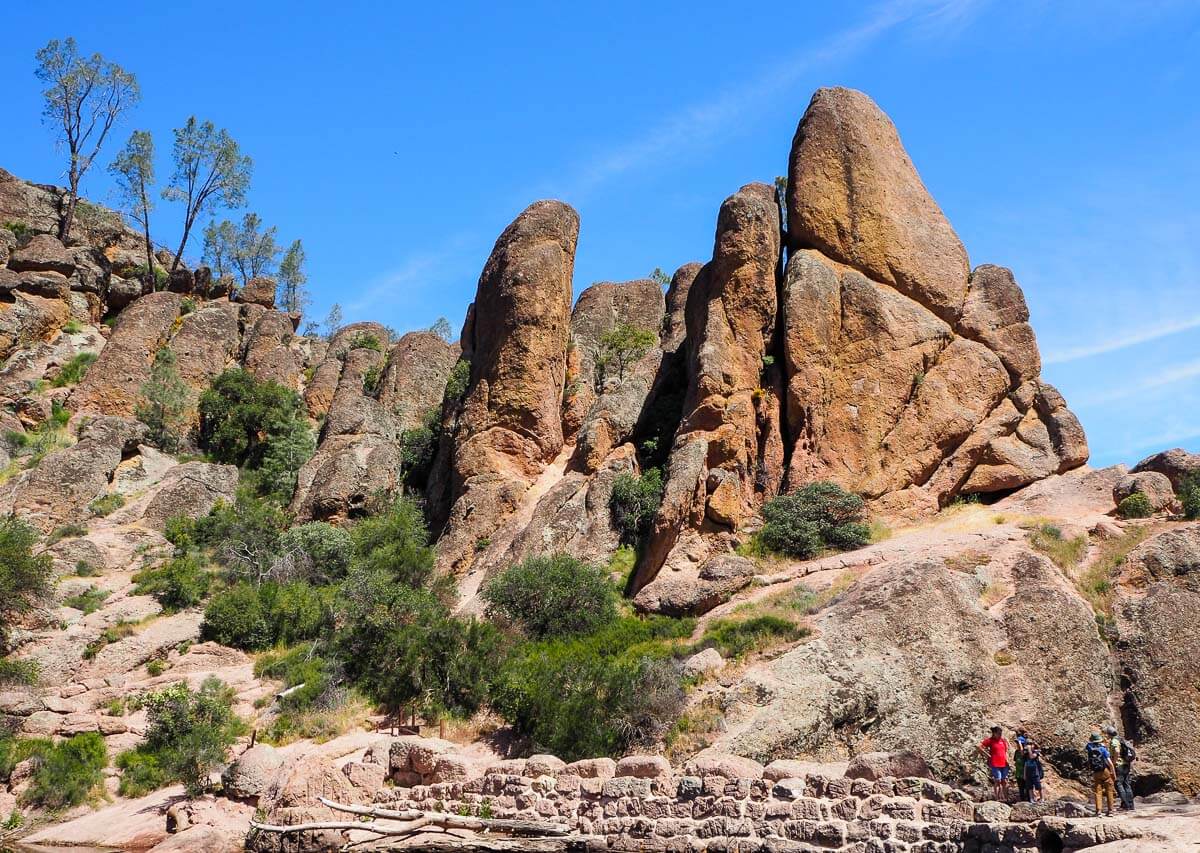
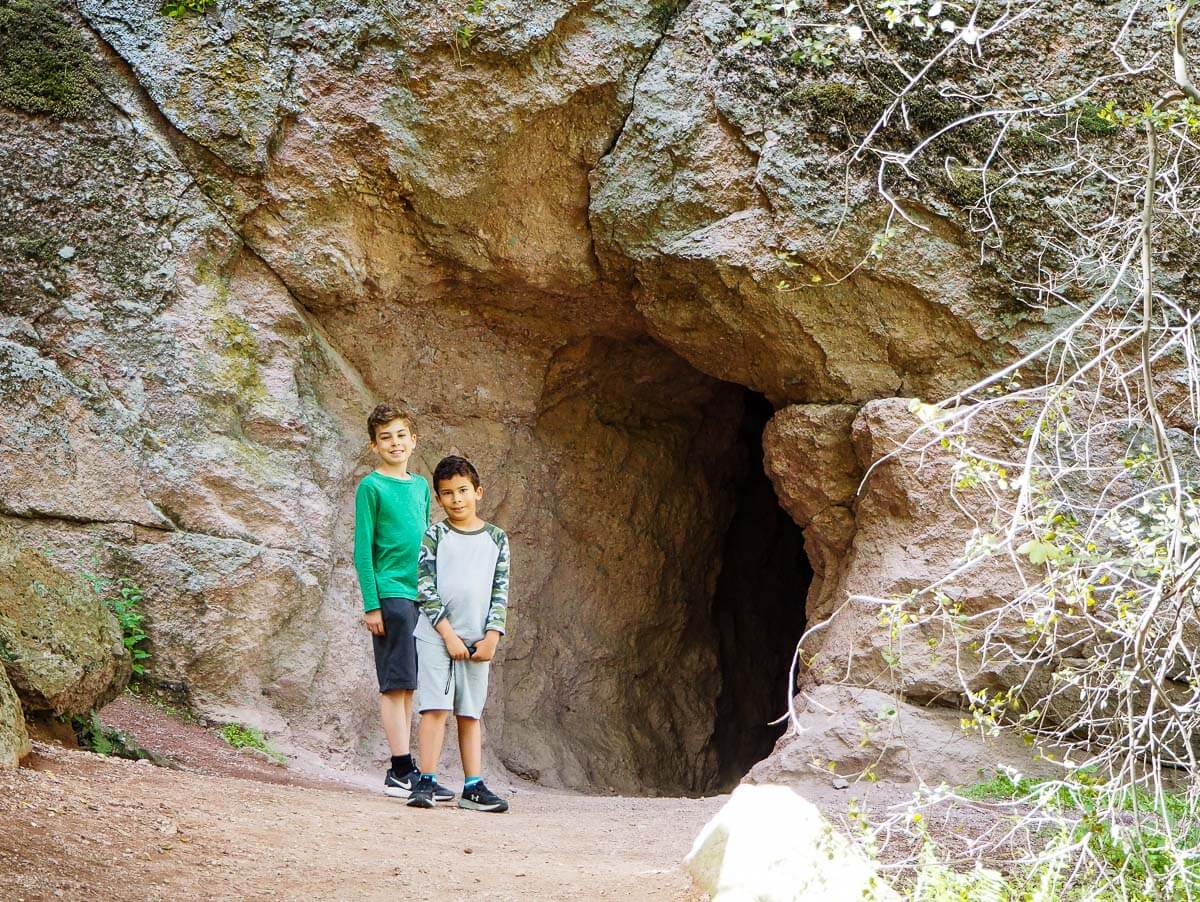
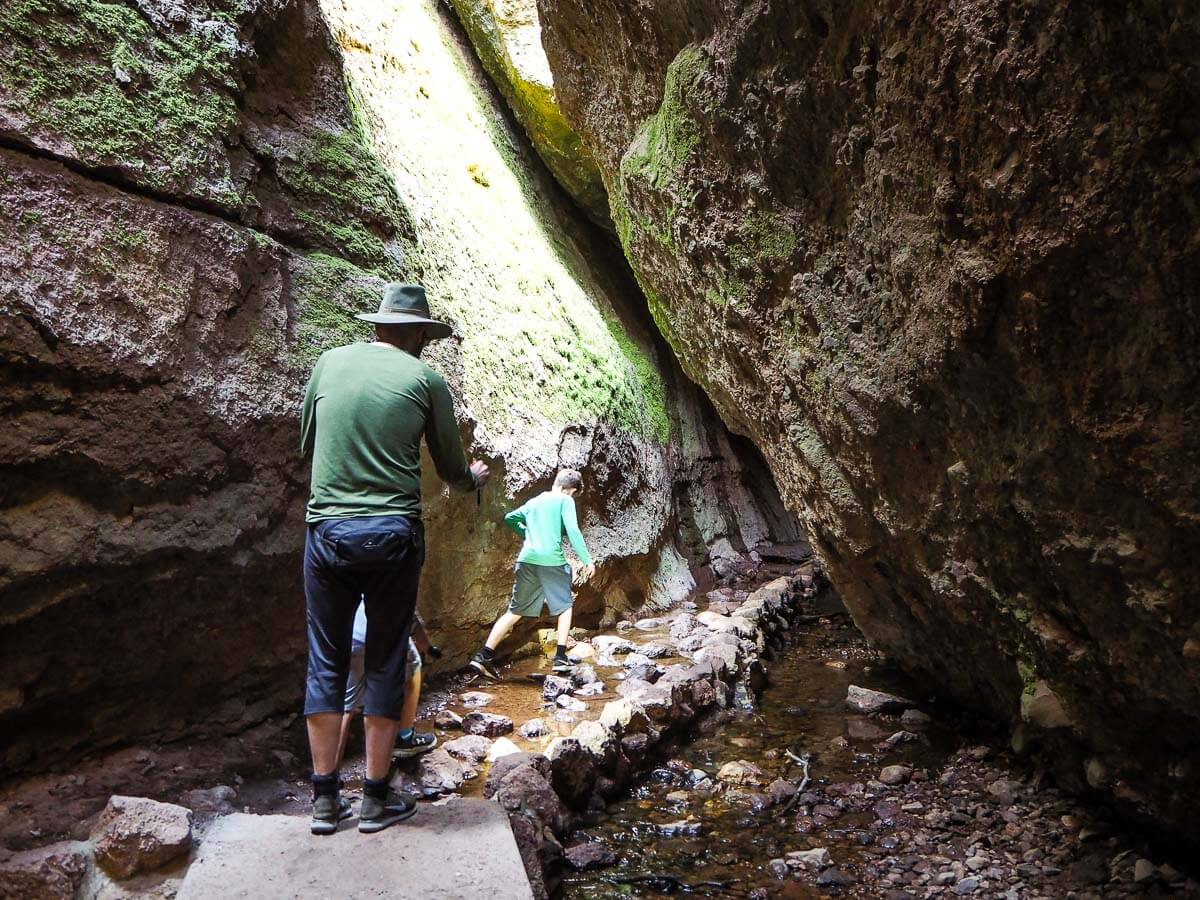


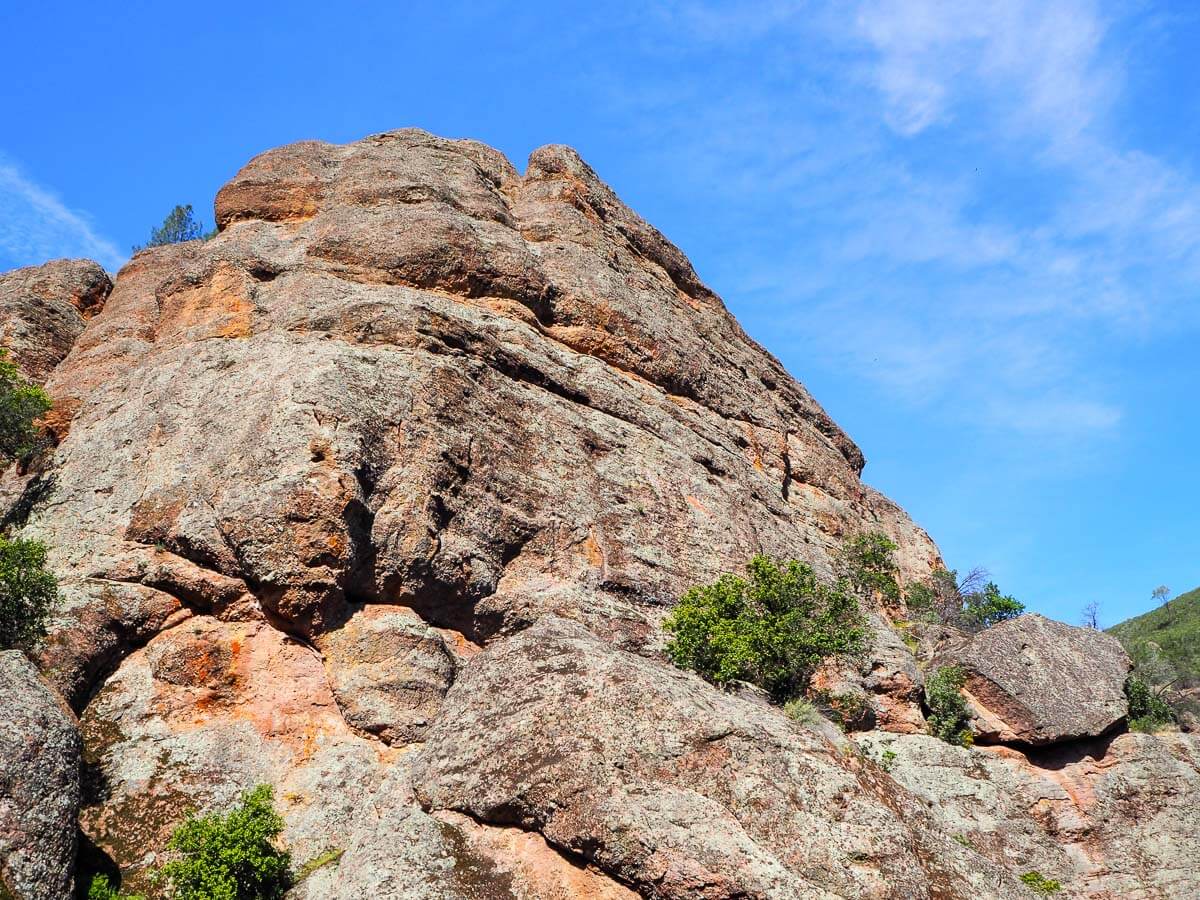
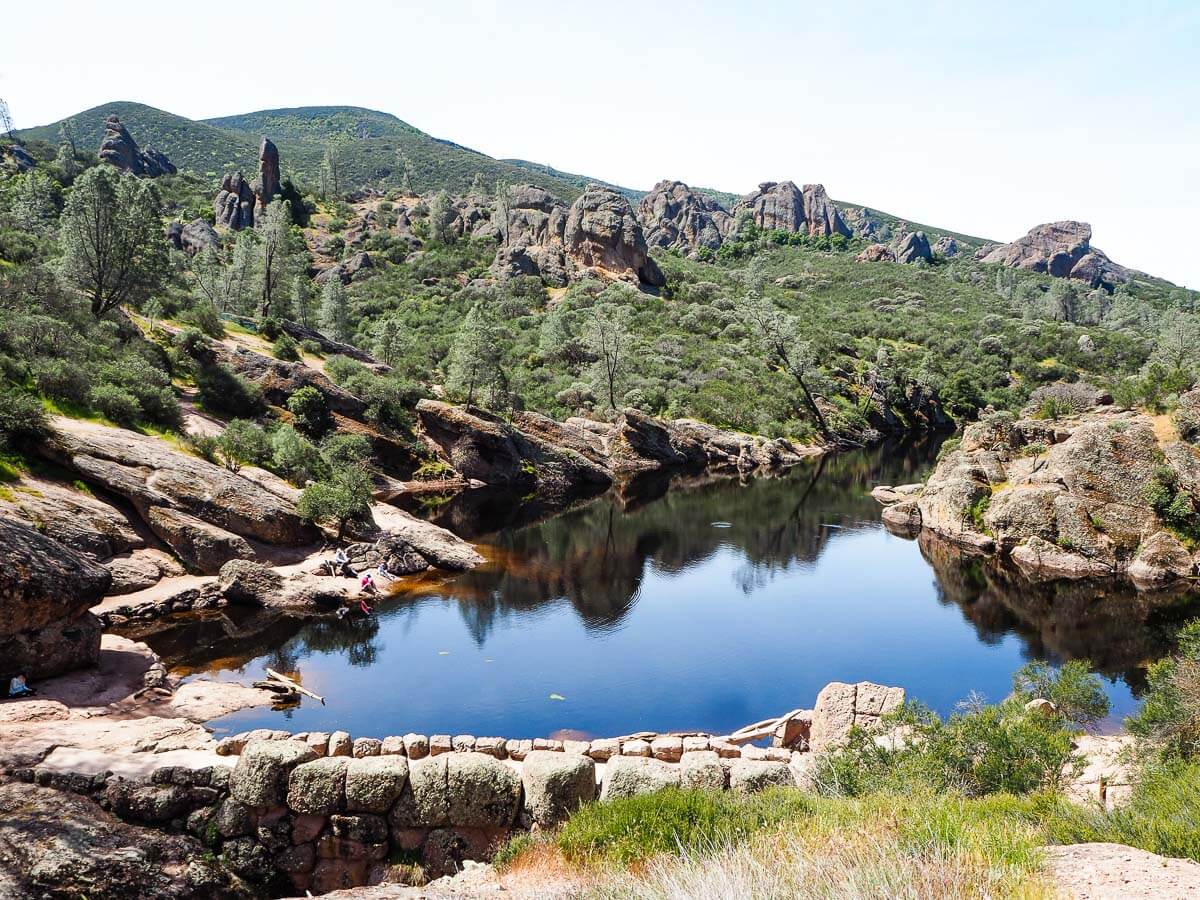
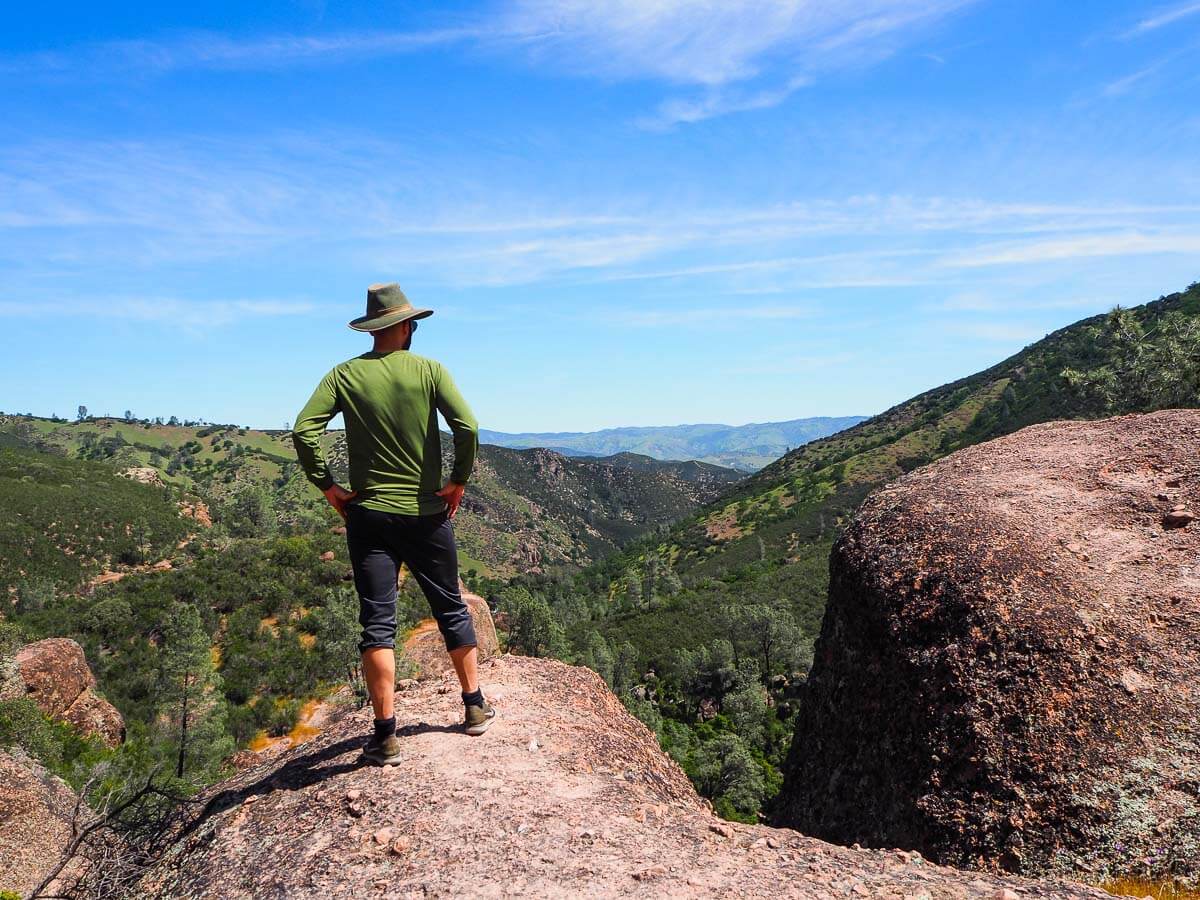
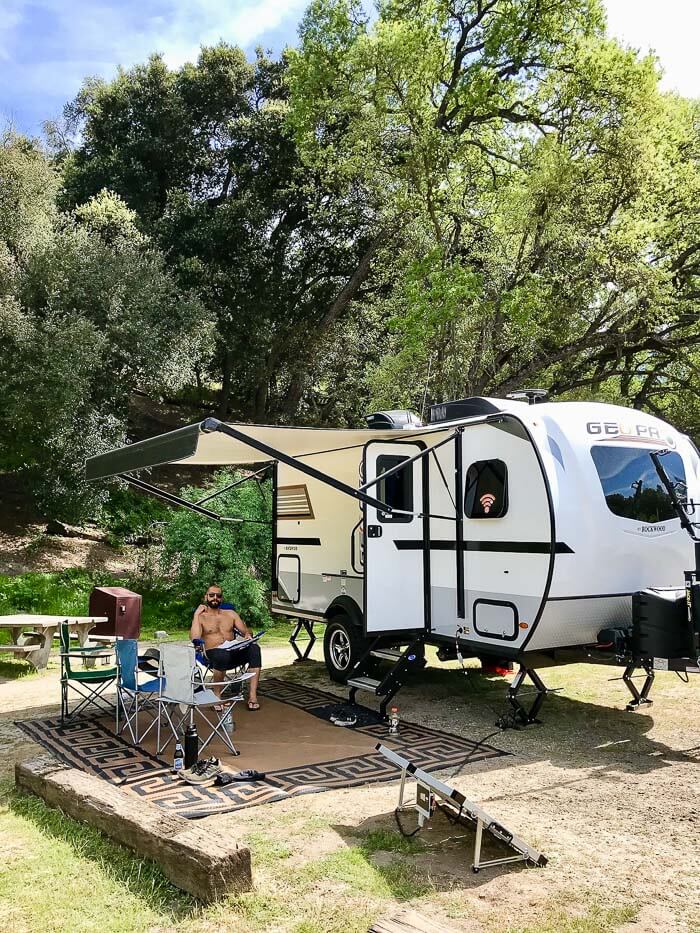
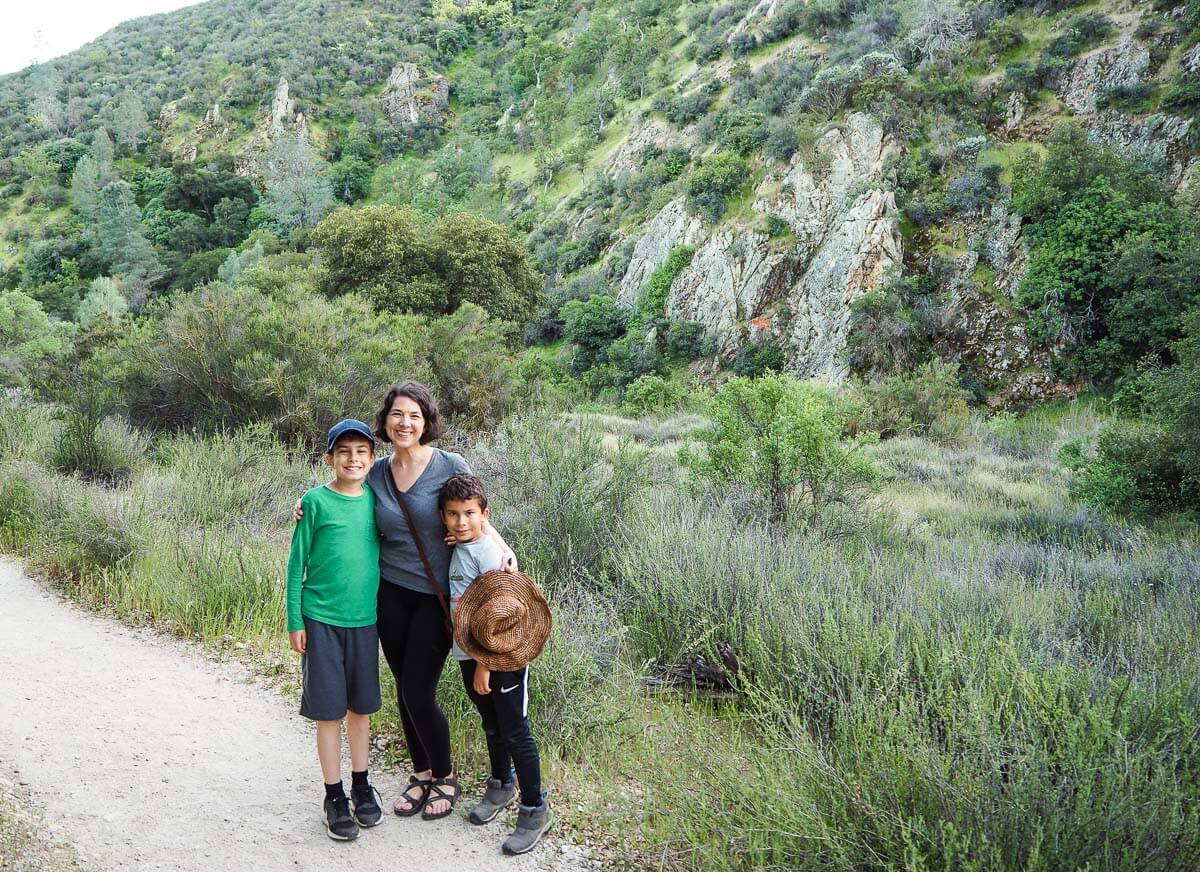
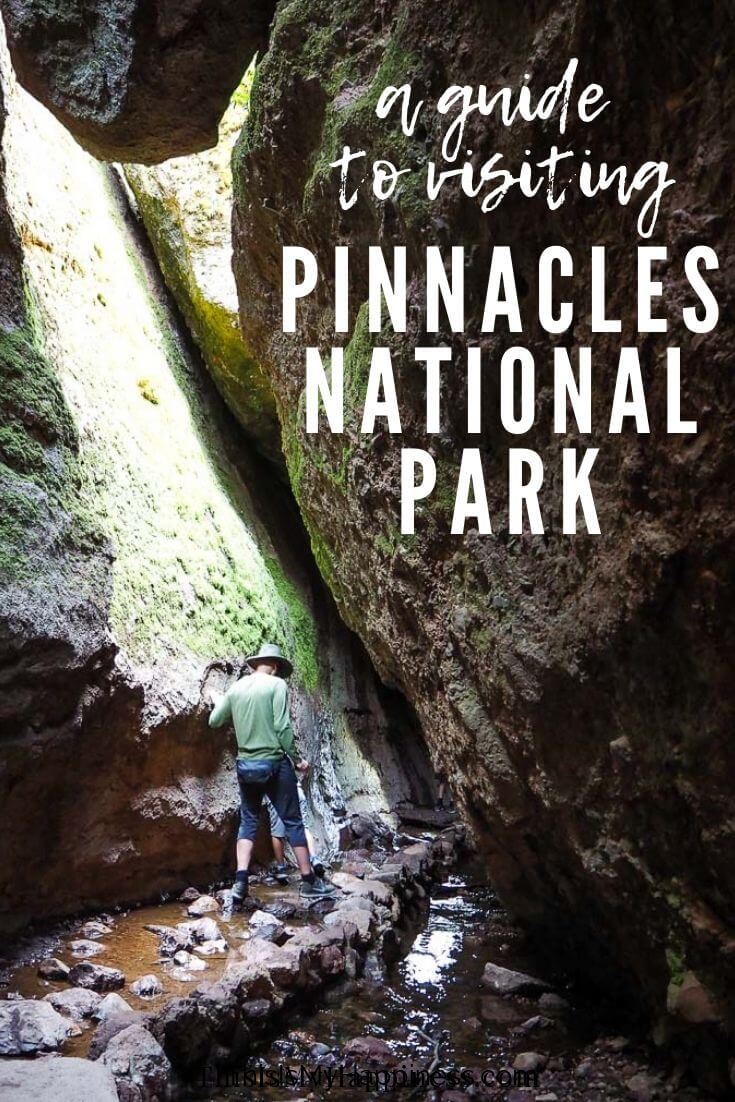
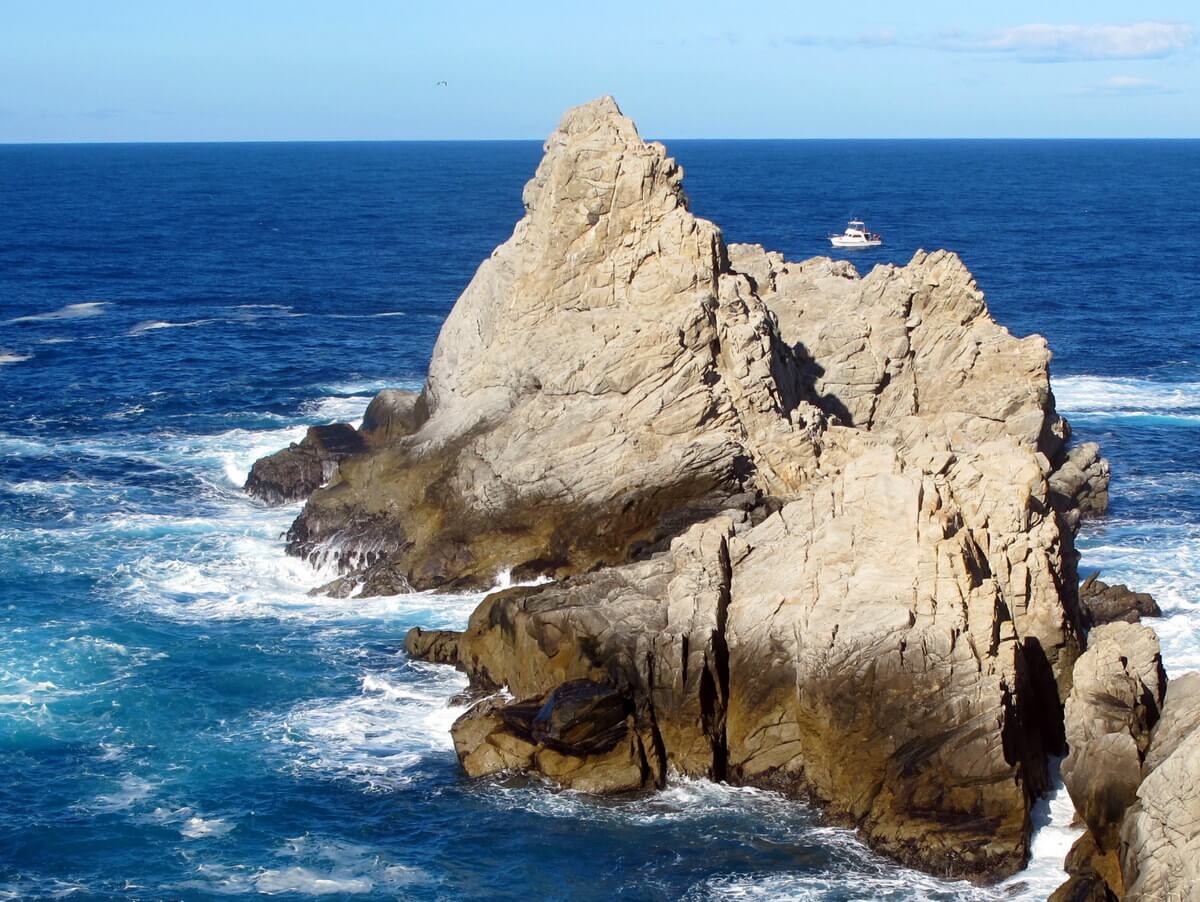
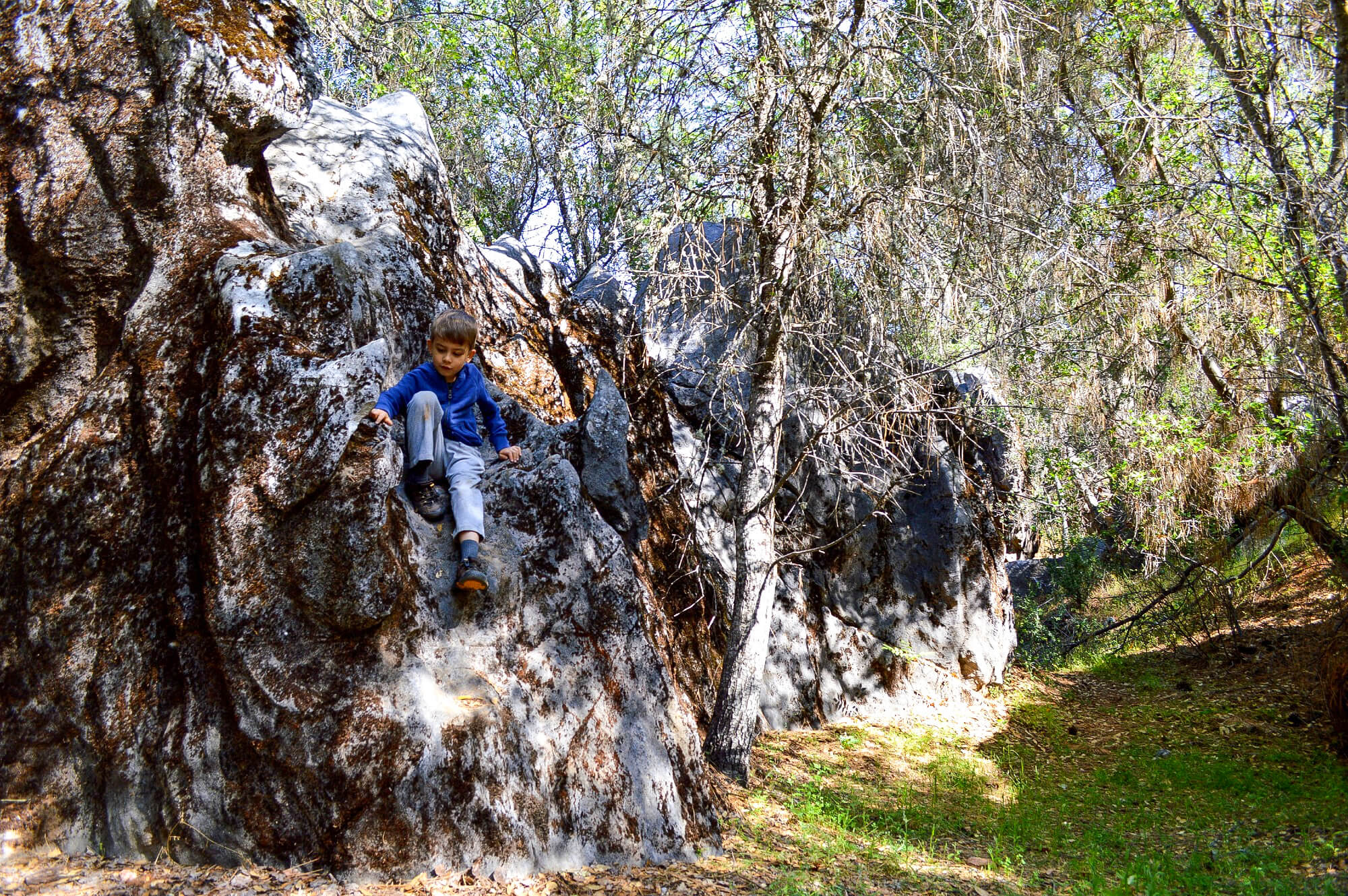
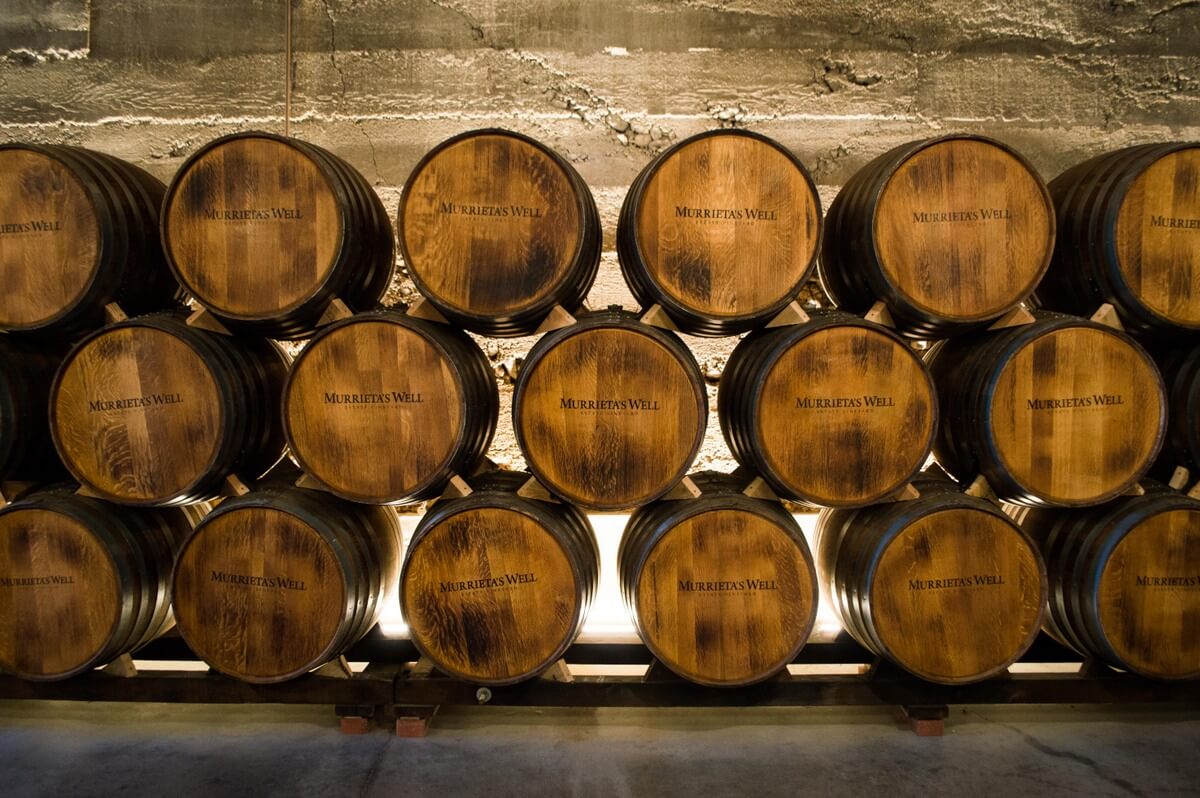
Great post! I absolutely LOVE visiting the national parks, but I wasn’t familiar with Pinnacles (I guess because it’s so new). I’ll have to plan a trip there soon!
It’s so fun and feels much more manageable than many of the other parks. I hope you love it! 🙂
Thanks for sharing, it was very insightful. Did you find that you needed to go through the west entrance to access a different trailhead?
We did all of it through the east entrance. The trails were within walking or a short drive from the campground.
Hi Jenna, my adult daughter and I are going to Pinnacles today. We have not been yet. It sounds like you were able to go through the caves? We are coming from Sacramento for the a day trip. Would you recommend coming in from the west or east entrance.
Thank you for sharing.
That will be a long day trip but it should be fun! I’d recommend the east side. Yes, we were able to go through the Bear Gulch cave. Balconies is another cave but we were not able to reach it before it got dark because we did that as an evening hike. The trails to and from Bear Gulch are really nice, and there was plenty to see and do around the cave. Have a great time 🙂
What week(s) in April are the best to see the most variety of wildflowers? Early, Mid, Late?
Unfortunately, I’m not sure, and I would guess that it can vary from one year to the next depending on weather. We were there in early to mid April when we saw so many wildflowers.
That’s what I wanted to know…thank you!
I now hope the park doesn’t wash away before we get there. Website says it’s presently closed due to the torrential rains and high winds causing quite a bit of trail damage, etc.